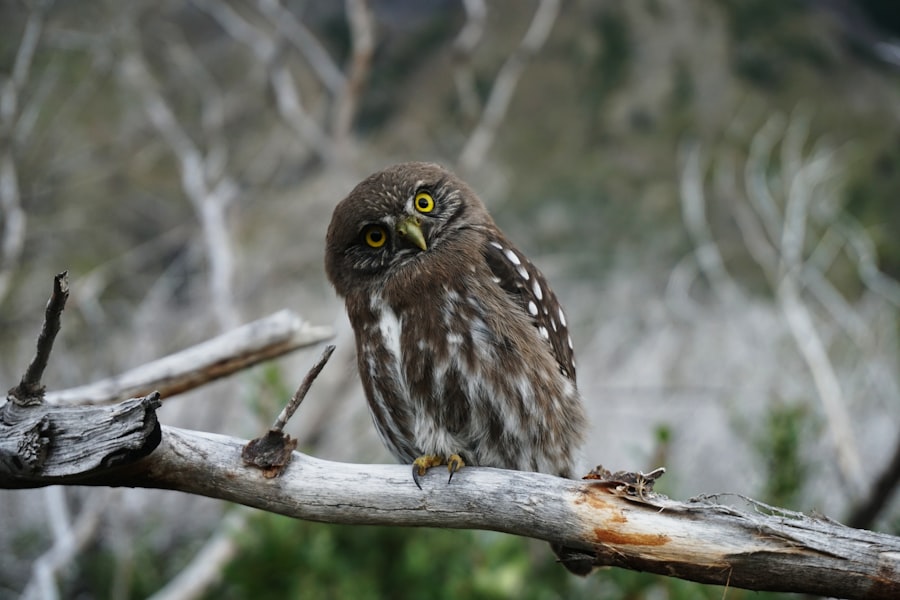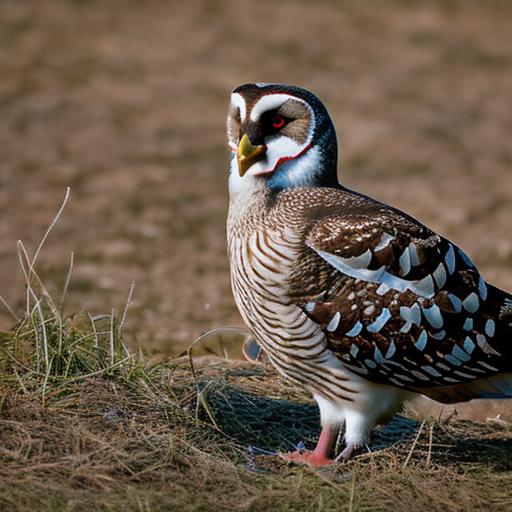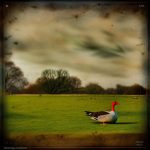Owl decoys have become a popular solution for deterring geese from invading properties. With the growing problem of geese causing damage and leaving behind unsightly messes, property owners are in need of effective solutions to keep these birds at bay. Owl decoys offer a natural and non-harmful way to scare geese away, making them a popular choice for many.
Key Takeaways
- Owl decoys are effective in deterring geese from certain areas.
- Geese are attracted to areas with water and open spaces, making them difficult to control.
- Owl decoys work by mimicking a predator and scaring geese away from the area.
- Choosing the right type of owl decoy depends on the size and location of the area you want to protect.
- Proper placement and positioning of owl decoys is crucial for maximum impact in deterring geese.
Understanding the behavior of geese and their attraction to certain areas
To effectively deter geese, it is important to understand their behavior and what attracts them to certain areas. Geese are social animals that are attracted to open spaces near water sources, such as ponds or lakes. They are also drawn to areas with ample food sources, such as grassy fields or lawns. Once geese have established a presence on a property, they can be difficult to deter due to their strong homing instinct and territorial nature.
How an owl decoy works to keep geese away from your property
An owl decoy works by exploiting the natural fear that geese have of predators. Geese are instinctively wary of owls, as they are known to prey on smaller birds and animals. When geese see an owl decoy, they perceive it as a threat and will often avoid the area altogether. Owl decoys provide both visual and auditory cues that mimic the presence of a real owl, further enhancing their effectiveness.
Choosing the right type of owl decoy for your specific needs
There are several types of owl decoys available on the market, each with its own features and benefits. The most common types include static decoys, which remain in one position, and motion-activated decoys, which move or make noise when triggered by nearby movement. When choosing an owl decoy, it is important to consider factors such as the size of your property, the severity of the goose problem, and your personal preferences.
Placement and positioning of owl decoys for maximum impact
To maximize the effectiveness of an owl decoy, proper placement and positioning are key. Owl decoys should be positioned in areas where geese are likely to congregate, such as near water sources or feeding areas. It is also important to position the decoy in a way that mimics the natural behavior of an owl, such as perched on a high point or facing the wind. By strategically placing owl decoys, property owners can create a more realistic and intimidating presence.
Supplementing owl decoys with other methods of goose control

While owl decoys can be effective on their own, they can be even more effective when used in conjunction with other methods of goose control. For example, using noise deterrents, such as sirens or ultrasonic devices, can further enhance the effectiveness of an owl decoy. Additionally, implementing landscaping techniques that make the property less attractive to geese, such as installing fencing or using deterrent sprays, can help to create a more comprehensive goose control plan.
Maintenance and upkeep of owl decoys for long-term use
To ensure the long-term effectiveness of owl decoys, regular maintenance and upkeep are necessary. This includes periodically cleaning the decoy to remove dirt and debris, as well as checking for any damage or wear. If any parts of the decoy become damaged or worn out, they should be replaced promptly to maintain the decoy’s effectiveness.
Potential drawbacks and limitations of using owl decoys for goose deterrence
While owl decoys can be an effective solution for deterring geese, there are some potential drawbacks and limitations to consider. One limitation is that geese may eventually become accustomed to the presence of an owl decoy and no longer perceive it as a threat. To overcome this limitation, it is important to periodically move or reposition the decoy to maintain its effectiveness. Additionally, owl decoys may not be effective in all situations, such as when geese are nesting or when there is a large population of geese in the area.
Success stories and testimonials from users of owl decoys
Many property owners have found success in using owl decoys to deter geese from their properties. For example, one homeowner in a suburban neighborhood had been dealing with a large population of geese that were causing damage to his lawn and leaving behind droppings. After installing an owl decoy near his pond, the geese quickly dispersed and have not returned since. Another property owner who owns a golf course had been struggling with geese congregating on the fairways and causing damage to the grass. After placing several owl decoys throughout the course, the geese were deterred and the damage was significantly reduced.
weighing the pros and cons of using an owl decoy for geese control
In conclusion, owl decoys can be an effective solution for deterring geese from invading properties. They work by exploiting the natural fear that geese have of predators, providing both visual and auditory cues that mimic the presence of a real owl. While there are some potential drawbacks and limitations to consider, such as geese becoming accustomed to the decoy or certain situations where they may not be effective, many property owners have found success in using owl decoys to keep geese at bay. By weighing the pros and cons and considering factors such as property size and severity of the goose problem, property owners can determine if an owl decoy is the right solution for their needs.
If you’re looking for effective ways to keep geese away from your property, you might be interested in an article on Poultry Wizard that explores the use of owl decoys as a deterrent. Owls are natural predators of geese, and the presence of an owl decoy can create a sense of danger for these birds, causing them to avoid the area. To learn more about how an owl decoy can help keep geese away, check out this informative article: https://poultrywizard.com/keeping-chickens/how-big-does-a-coop-need-to-be-for-a-chicken/.
FAQs
What is an owl decoy?
An owl decoy is a fake owl that is used to scare away birds and other animals that may cause damage to crops or property.
Do geese fear owls?
Yes, geese are naturally afraid of owls because they are predators that hunt small animals, including birds.
Will an owl decoy keep geese away?
Yes, an owl decoy can be an effective way to keep geese away from an area. The sight of the owl decoy will trigger the geese’s natural fear response and cause them to avoid the area.
How do you use an owl decoy to keep geese away?
To use an owl decoy to keep geese away, you should place it in a visible location near the area where the geese are causing problems. You should also move the decoy around periodically to make it appear more realistic.
Are there any downsides to using an owl decoy?
One potential downside to using an owl decoy is that geese may eventually become accustomed to it and realize that it is not a real threat. Additionally, if the decoy is not moved around periodically, geese may eventually realize that it is not a real owl and ignore it.
Meet Walter, the feathered-friend fanatic of Florida! Nestled in the sunshine state, Walter struts through life with his feathered companions, clucking his way to happiness. With a coop that’s fancier than a five-star hotel, he’s the Don Juan of the chicken world. When he’s not teaching his hens to do the cha-cha, you’ll find him in a heated debate with his prized rooster, Sir Clucks-a-Lot. Walter’s poultry passion is no yolk; he’s the sunny-side-up guy you never knew you needed in your flock of friends!







